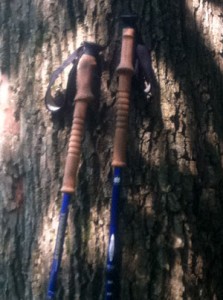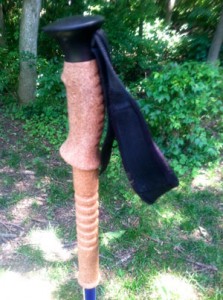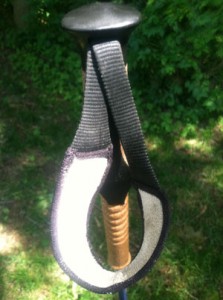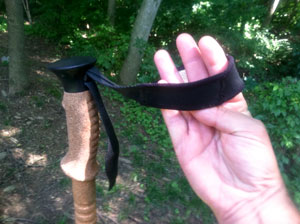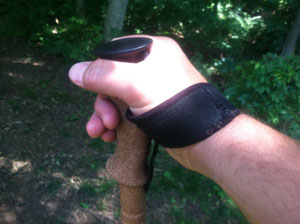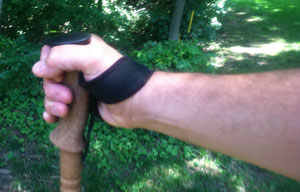Trekking poles or “walking sticks” have been a great idea for me. I‘ve owned trekking poles for at least ten years. I used them a little when I first got them, but didn’t really understand the advantage. About a year ago my knees, which have been giving me trouble for going on thirty years, really started to bark. I was wondering if I was going to have to cut my hiking way back.
Trekking Poles Reduce Joint Impact
I remembered reading something that said trekking poles could reduce the impact of hiking on the knees 20% to 25%. There were actually two studies showing the benefit of poles. In 1981 Dr. G. Neureuther proved that “ski poles” reduced the pressure or strain on the opposite leg by about 20%. A 1999 study in the Journal of Sports Medicine showed trekking poles can reduce the compressive force on your knees by up to 25%.
I don’t know if you will have the same success as I have, but it was almost instantaneous for me. Don’t use the poles, knees hurt. Use the poles, pain relief. I recommend them to everyone. I don’t know how much wear and tear I would have saved my knees if I had used them years ago. Another benefit for me personally was my shoulders. I was having some shoulder problems and using the poles helped strengthen my shoulders. The other benefit was that waddle you get under the biceps. Helped tighten mine right up.
Advantages of Trekking Poles
Trekking poles do offer advantages that, I know, will help everyone:
- Better balance and footing
- Help you set a pace
- Move vegetation off trail
- Probing unknown surfaces and holes
Aluminium or Graphite?
Trekking poles are made of either aluminum or graphite. Aluminum will handle shock better. Graphite will be lighter. Graphite will also make your wallet lighter. Graphite is more expensive. Since trekking poles have become more mainstream, you can find them at most larger sporting goods stores as well as hiking and backpacking stores. There are a number of online sellers as well. I just happened to buy mine at Sierra Trading Post. They sell overruns and seconds at a reduced price. I have had no trouble with mine.
Cork, Rubber or Foam Handles?
The handles are made of cork, rubber, and foam. My poles just happen to be made
of cork. Cork is the traditional material for trekking poles. Cork resists moisture from sweaty hands and molds to your hands well. Unfortunately, it is the most expensive.
Rubber handles are best for poles used in cold weather since it is a good insulator. A buddy of mine has rubber handles and they get a little slimy in the warmer weather, but it is not a big negative for him.
Foam handles are softest to the touch and absorb moisture from sweaty hands. I have no experience with foam. My biggest concern is durability. When they are dropped does the foam get nicked up? If you have experience with foam let me know and I will post your experience.
The pictures you see are of my trekking poles. The only reason I have cork is because my poles are so old. I don’t know if I would have spent the extra money today. As you can see the cork handles have the extensions below the handle for uneven terrain. Can’t say I have ever used the lower section of the handles. Does anyone see them as a great advantage?
Fitting Your Poles
My poles have twist locks to lengthen and shorten the poles. I have never had
any problem with them. My buddy has flip locks to control the length of his poles. His also have a nut that he can adjust the tension of the locks. Does anyone have any preferences?
If you have never used poles before it is pretty simple. Adjust the poles to a length that makes your forearm parallel to the ground with your elbow at a 90-degree angle (see picture).
You will see in various places people recommending you shorten your poles on uphill terrain and lengthen them on downhill to maintain that 90-degree angle. Unless you are going uphill or downhill all day I don’t see the advantage of continual switching…too much work… too much time. Just my opinion.
Your trekking pole may be made up of two or three section. If it is a two section it
is simple, just set the length. If it is a three-section pole you want each section to be about the same length to make it its strongest. Most poles will give the overall length of the pole, at each joint, to make it easy to get the pole sections even. Check you manufacturers instructions for precise fitting instructions.
How Do I Hold the Poles?
Holding the pole may be a little counter intuitive.You use the strap to hold the pole and swing it forward. Using your thumb and first finger like a clip. To get your hand in the right position put your hand up through the strap and grasp the pole with the piece of strap attached to the pole between your hand and the pole. Your wrist and hand will bear the pressure of using the pole, rather than grasping it like an upside down tennis racquet.
Grasping the pole sounds more complicated than it is, see the pictures for
better clarity. You use the strap as a pivot point to allow you to flip the poles out infront of you as you move down the trail. The pole out in front will be opposite the forward foot.
Easy to Adjust Strap
When you buy your poles make sure the strap is easy to adjust. In winter you will need to make the loop bigger to fit around your gloves and smaller in the summer. My strap has a nice wide padded section that will help spread the pressure of planting the pole.
There are pluses and minuses to the padding. Due to sweating the strap can start
to smell like an old pair of sneakers. I found soaking them in OxiClean over night should solve the problem. You just have to figure out how to prop your poles so the straps can drop into a container containing the solution.
There are some environmental concerns with using poles. The tips can scratch stone, so you might leave a mark. There are rubber tips that you can put over the metal ones to keep you from scratching rock and they actually might give you better traction. Be careful with the poles on wet or icy mornings on bridges. Pressure treated lumber is great for lasting a
long time, but it gets real slimy and the poles won’t help you much in this situation.
You will probably come upon some people that don’t understand why you use your trekking poles, but I would not let that deter you. I wish I had the foresight to understand how much they could have helped me years ago.


